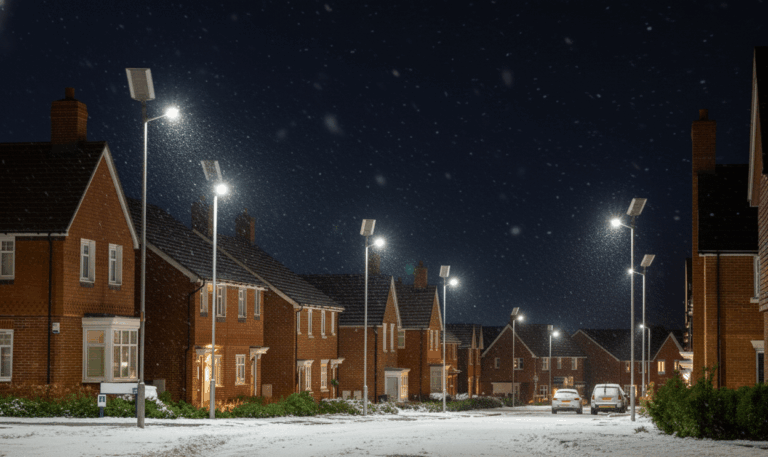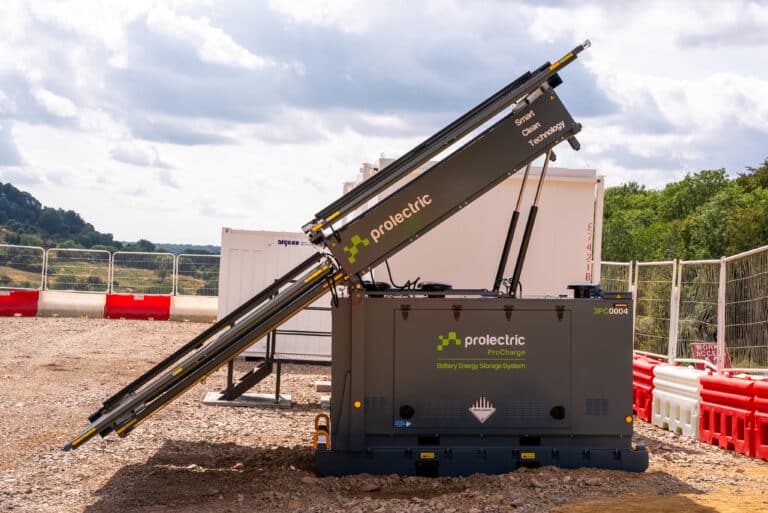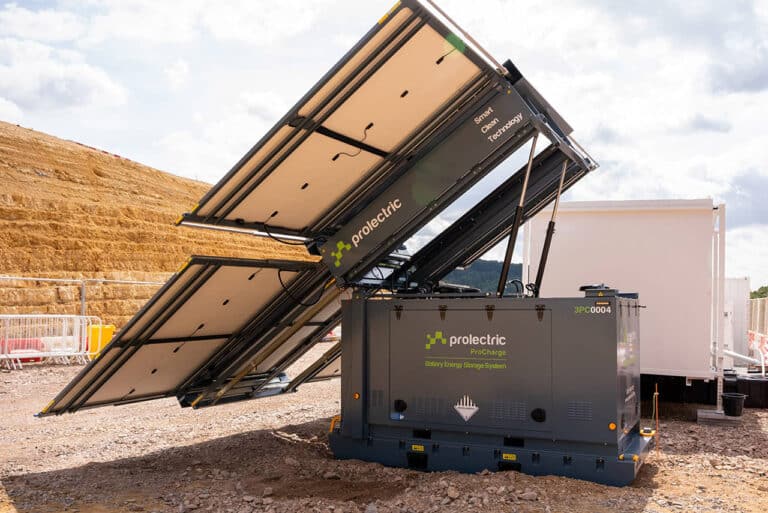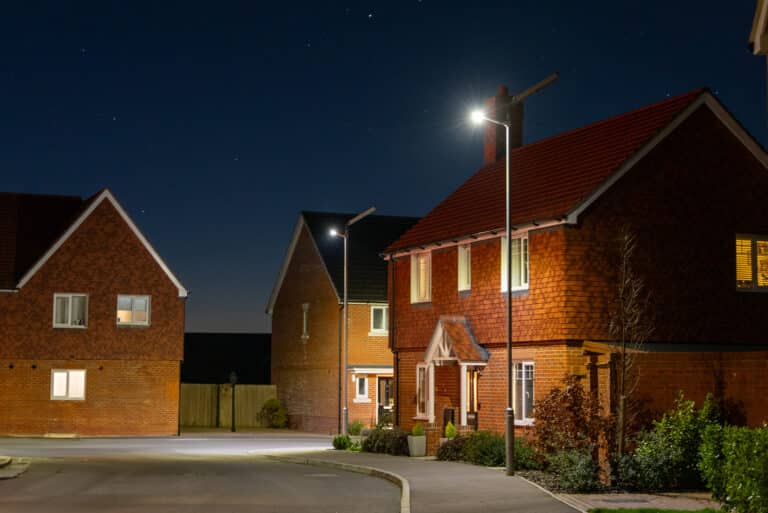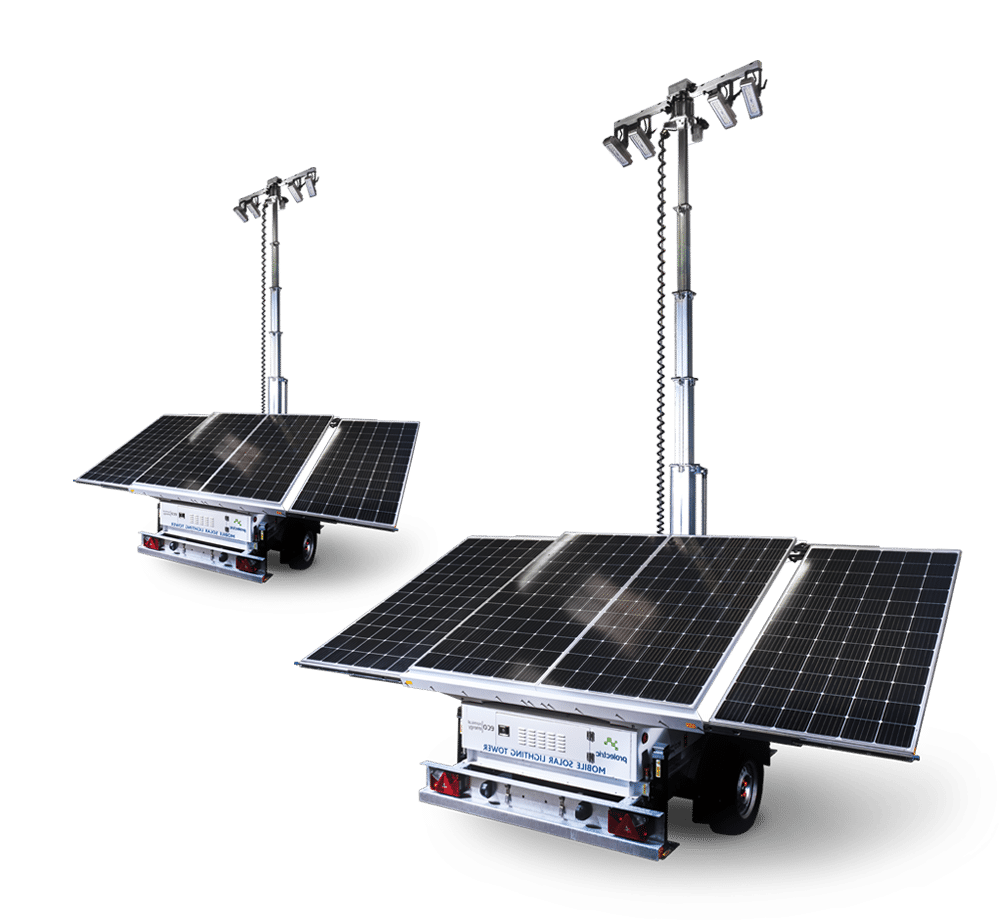![Prolectric ProLight Highways [Night]](https://media.prolectric.co.uk/uploads/2024/04/Pro-Light-Highways-Night-960x641.jpg)
Welcome to Prolectric’s definitive guide to selecting tower lights aligned with Sustainable Development Goals.
As a thought leader and specialist in off-grid, renewable lighting, and power generators, we’re dedicated to assisting customers in choosing lighting solutions that support their sustainability initiatives. Selecting portable solar tower lights that align with SDGs requires a blend of expertise in renewable energy, sustainability, and construction equipment.
This guide has been updated for 2025 to reflect the latest trends and advancements in tower lighting. Discover how sustainability, smart technologies, and innovative designs can transform your lighting choices this year.
1. Understanding Sustainable Development Goals (SDGs)
Sustainable Development Goals (SDGs) are a set of global objectives adopted by the United Nations in 2015 as part of the 2030 Agenda for Sustainable Development. These goals comprise 17 interconnected and interdependent targets designed to address pressing social, economic, and environmental challenges worldwide. They provide a shared blueprint for countries, organisations, and individuals to achieve a more sustainable and equitable future for all.

The relevance of Sustainable Development Goals in construction projects is substantial due to the significant impact of construction activities on the environment, society, and the economy.
Here’s how SDGs are pertinent to construction projects:
1.1 Affordable and Clean Energy (SDG 7):
Construction projects often require significant energy consumption. Adhering to SDG 7 involves incorporating renewable energy sources like solar, wind, or green hydrogen power into construction processes to reduce reliance on fossil fuels, thus lowering carbon emissions.
1.2 Sustainable Cities and Communities (SDG 11):
Construction significantly shapes urban areas. Adhering to SDG 11 involves developing sustainable infrastructure, efficient use of resources, and creating inclusive, safe, and resilient communities through well-planned construction projects.
1.3 Responsible Consumption and Production (SDG 12):
Construction activities generate a substantial amount of waste. Adhering to SDG 12 involves implementing sustainable construction practices, minimising waste generation, promoting recycling, and using eco-friendly materials.
1.4 Climate Action (SDG 13):
Construction contributes to greenhouse gas emissions and environmental degradation. Adhering to SDG 13 involves adopting climate-resilient design, reducing emissions, and mitigating the environmental impact of construction activities.
1.5 Life on Land (SDG 15):
Construction projects can disrupt ecosystems and biodiversity. Adhering to SDG 15 involves minimising deforestation, preserving natural habitats, and implementing measures to protect and restore land impacted by construction.
1.6 Partnerships for the Goals (SDG 17):
Collaboration among stakeholders in the construction industry is essential to achieving sustainable development. Adhering to SDG 17 involves fostering partnerships between governments, businesses, communities, and organisations to promote sustainable construction practices and innovation.
By integrating Sustainable Development Goals into construction projects, stakeholders can contribute to environmental conservation, social inclusivity, economic stability, and overall sustainable development, ensuring that construction activities are not just efficient but also aligned with global efforts towards a more sustainable future.
2. Understanding the classifications used to categorise greenhouse gas emissions:
Scope 1, Scope 2, and Scope 3 emissions are classifications used to categorise greenhouse gas emissions produced by organisations, businesses, or entities. These categories help in understanding the sources and impact of emissions, aiding in the development of strategies to mitigate and manage them effectively.
2.1 Scope 1 Emissions:
- Scope 1 emissions refer to direct greenhouse gas emissions produced from sources that are owned or controlled by an organisation. These emissions typically include:
- Fuel combustion: Emissions from burning fossil fuels within the organisation’s own facilities or vehicles, such as emissions from boilers, furnaces, company-owned vehicles, and on-site power generation.
- Industrial processes: Emissions generated from specific industrial processes, such as chemical reactions, manufacturing activities, or waste management within the organisation’s operations.
2.2 Scope 2 Emissions:
- Scope 2 emissions entail indirect greenhouse gas emissions resulting from the consumption of purchased electricity, heat, or steam by an organisation. These emissions are not produced on-site but are associated with the generation of electricity, heat, or steam purchased and used by the organisation. They typically include:
- Electricity consumption: Emissions generated from the production of electricity purchased from external sources, such as the emissions associated with the use of power from the grid or external providers.
2.3 Scope 3 Emissions:
- Scope 3 emissions encompass all other indirect greenhouse gas emissions that occur in the value chain of an organisation but are not considered in Scopes 1 and 2. These emissions are often more challenging to measure and manage because they occur from sources that are not directly owned or controlled by the reporting organisation. Scope 3 emissions can include:
- Supply chain emissions: Emissions from the extraction, production, and transportation of purchased materials, goods, and services used by the organisation.
- Employee commuting: Emissions from the transportation methods employees use to commute to and from work.
- Product use: Emissions resulting from the use and disposal of products and services provided by the organisation, including end-of-life disposal.
Understanding and accounting for all three scopes of emissions is crucial for organisations aiming to comprehensively assess their environmental impact. Addressing Scope 1, 2, and 3 emissions enables a more holistic approach to emissions management, facilitating the development of effective strategies to reduce overall greenhouse gas emissions throughout the entire value chain.
At Prolectric we use a variety of recognised systems to actively monitor all our emissions and we help our customers monitor, reduce and report their scope 1 emissions through sustainable lighting and power solutions.
3. Importance of tower lights in sustainable development
As we step into 2025, the landscape of tower lighting continues to evolve, driven by technological advancements and a heightened focus on sustainability. This guide provides insights into the latest trends and considerations to help you select tower lights that meet your needs and contribute to a greener future.
Sustainability remains at the forefront of lighting innovations. The industry is witnessing a surge in eco-friendly options, including solar-powered lighting and energy-efficient materials. These developments not only reduce environmental impact but also offer cost savings over time.
Tower lights play a pivotal role in supporting sustainable development by:
- Providing reliable and efficient lighting solutions powered by renewable energy sources.
- Minimising carbon footprint and reducing reliance on non-renewable energy.
- Supporting off-grid areas, construction sites, and communities with eco-friendly illumination.
Renewable energy sources such as solar power play a crucial role in reducing carbon footprint due to several key factors:
3.1 Clean and Green Energy Production:
Solar power generation produces electricity without emitting greenhouse gases or pollutants, unlike fossil fuels like coal, oil, or natural gas. This clean energy production significantly reduces the amount of carbon dioxide (CO2) and other harmful emissions released into the atmosphere, contributing to mitigating climate change.
3.2 Zero Emissions During Operation:
Solar panels generate electricity by harnessing sunlight and converting it into usable energy. This process doesn’t involve combustion, thereby eliminating emissions during the operation of solar power systems. As a result, they have minimal environmental impact in terms of air and water pollution.
3.3 Abundant and Renewable Resource:
The sun is an abundant and virtually limitless source of energy. Unlike finite fossil fuels, solar power is renewable, meaning it can be continuously tapped without depletion. This accessibility ensures a consistent and sustainable source of clean energy over the long term.
3.4 Reducing Reliance on Fossil Fuels:
By utilising solar power, individuals, businesses, and communities can reduce their dependency on fossil fuels for electricity generation. Reducing reliance on non-renewable energy sources helps decrease the overall demand for coal, oil, and natural gas, thereby cutting down on carbon emissions associated with their extraction, transportation, and combustion.
3.5 Lowering Carbon Footprint Across Sectors:
Solar power can be applied across various sectors, including residential, commercial, industrial, and even in transportation through electric vehicles charged by solar energy. By diversifying energy sources and incorporating solar power, it becomes possible to reduce carbon footprints across multiple sectors simultaneously.
3.6 Long-Term Environmental Benefits:
Investing in solar power infrastructure contributes to long-term environmental benefits by fostering sustainable energy practices. This helps in achieving climate goals by significantly reducing greenhouse gas emissions, preserving natural resources, and protecting ecosystems.
The widespread adoption of solar power and other renewable energy sources is pivotal in combating climate change and reducing the carbon footprint. Their clean, sustainable nature not only mitigates environmental impact but also promotes energy independence and resilience while fostering a healthier planet for future generations.
4. What are tower lights
With so many mobile tower lights available in the market it is important to understand the various options available. Human-Centric Lighting should be prioritised, mimicking natural light patterns to improve well-being and productivity. Incorporating HCL into tower lights can create more comfortable and health-conscious environments, particularly in workplaces and public spaces.
Tower lights are an essential piece of equipment on site for safe work after dark and in areas of poor lighting. They provide necessary lighting for workers and the public on building sites, roadsides, and various other situations. Having inadequate lighting could lead to injury or have a significant impact on the productivity of projects.
Generally, they are operated all-year round, but become most needed during the Autumn and Winter months to extend working hours in the construction and emergency services sector.
Examples of where tower lights are used:
- Construction sites
- Roadside work
- Mining or underground works
- Night-time work
- Airports
- Events and festivals
- Emergency electrical work
- Emergency rescue
- Sports grounds or races
- Hospitality
- Performing trade out of hours tasks in poorly lit areas
With their versatility and functionality, tower lights have become an essential component in various industries, offering a wide range of benefits.
Tower lights are traditionally powered using fossil fuels, a petrol or diesel engine, or now more prominently through sustainable solutions which include solar or hybrid power. All are designed to provide reliable and consistent lighting for the user.
The lighting tower comprises a battery system or traditionally a generator engine, mast, lifting system, and lamps, this can also be constructed on a portable trailer for ease-of-use. Designs vary in size, power output, bulb type and height.
Advanced tower lights, such as those from Prolectric, include specialised telematics systems which assist in remote monitoring and control which make them a truly setup and forget piece of equipment, from any location. Furthermore, Ensuring consistent operation during nights or low sunlight periods is essential on site and in urban areas while working.
Our patented lighting control technology ensures the battery bank is never fully depleted and when correctly setup and in normal operation mode they self-manage, removing the need for periodic manual recharging – they truly last all year round and not through topping up from other sources. Prolectric’s batteries don’t need discharging and recharging taking them out of action to be recharged!
Prolectric’s Tower Light batteries have an expected recharge of 2,000 cycles but our tower lights only go through partial cycles in normal operation, so you can expect to get 7 years of lifespan. Whereas if you were doing a full cycle a day then this would equate to 5.5 years of lifespan. So with Prolectric you get much longer lifespan from your batteries with the partial cycling we do.
Types of Tower Lights:
4.1 Metal Halide Tower Lights
Metal halide tower lights produce a bright white light and are ideal for large outdoor areas that require high visibility, such as construction sites and stadium parking lots. Metal halide tower lights are also commonly used for roadworks and emergency response situations. With the delay in waiting for these types of lights to heat up and cost of running them, LED lights have become a more sought-after alternative.
4.2 LED Tower Lights
LED tower lights have gained popularity over the last few decades due to their energy efficiency and long lifespan. LED lights consume less energy compared to traditional lighting technologies, making them an environmentally friendly choice. These lights are highly versatile and can be used in various applications, ranging from construction sites to outdoor events. LED tower lights are known for their durability, resistance to shock and vibration, and instant illumination.
4.3 Solar-Powered Tower Lights
Solar-powered tower lights are an excellent choice for off-grid or environmentally conscious applications. These lights are equipped with solar panels that harness sunlight and convert it into electrical energy. The stored energy is then used to power the tower lights, eliminating the need for external power sources. Solar-powered tower lights offer the advantage of being self-sufficient and are often used in remote locations or areas with limited access to electricity. More universally used, solar-powered tower lights are now seen across all sites including, construction, residential and industrial applications.
4.4 Hybrid Tower Lights
Hybrid tower lights combine the benefits of both solar power and traditional electrical or generator supply. These lights are equipped with solar panels and batteries for charging during daylight hours, ensuring uninterrupted operation even during cloudy or low light conditions. Hybrid tower lights are suitable for applications that require extended runtime or when a consistent power supply is essential. They provide the flexibility of solar power while maintaining reliability through the backup electrical or generator system.
Prolectric offers a range of tower lights to suit any application based on site requirements and facilitates the switch from diesel tower lights to solar-powered or hybrid tower lights.
5. Factors to consider when selecting tower lighting for your project
At Prolectric our team of specialists consider your complete project to help you make an informed decision on your project lighting (and power) needs.
5.1 Cost-Efficiency:
- No Fuel Costs:
Solar tower lights harness energy from the sun, eliminating the need for fuel, reducing operational costs significantly. Be sure to consider the period of time that the machine will be in use. Although you might get 24hrs of operation from one tank of fuel, you will need to refuel, adding fuel and labour costs.
With solar tower lights you harness free energy and with Prolectric’s ProLight Solar Lighting Tower the trailer-mounted batteries power the LED lights, so that even on winter days with 16 hours of darkness, the unit operates consistently and reliably. No fuel, no refuelling, no additional costs!
- Low Maintenance:
Solar lighting towers have minimal moving parts, requiring less maintenance and reduce ongoing expenses. Traditional diesel tower lights require regular servicing and repairs, increasing costs long-term.
With Prolectric’s telematics software you can monitor your light towers across multiple sites from any location and see real-time statistics on each of your machines, including location, battery levels, runtime, utility and panel status, and so much more.
- How to Ensure your Investment is Protected:
Determine if it is better to rent or to buy a light tower, depending on the project needs. For example, if a light tower is going to be used in a one-off festival it might be better to rent one equipped with features specific to that event. ProRehire has partnered with a host of rental companies to facilitate the rental market’s needs.
Alternatively, you could buy tower lights from a trusted manufacturer, such as Prolectric, who offer a range of solar, and hybrid powered lights tailored to your projects needs and that has assured quality and durability helping safeguard your investment across the total lifecycle of the light tower.
- How Important is your Equipments Efficiency:
Efficiency is another key factor when choosing plant or site equipment.
-
- Firstly, what is the cost of fuel, labour and time needed for refuelling.
- Secondly, how much time is needed if towers need to warm up or cool down.
- Thirdly, what luminaire is being used, metal halide models require time to reach their normal operating temperature, where LEDs reach full luminosity when turned on and waste little energy.
- Long-Term Savings:
Despite the initial investment, solar tower lights offer long-term savings due to their low operational costs, minimal maintenance, and durability. Not only that, but carbon emissions savings over time are substantial, helping you to meet your sustainability goals.
Prolectric Solar Lighting Towers are all fitted with our advanced technology. Telematics can be monitored from anywhere and the on/off periods are automatically programmed according to the location dawn/dusk times, making them a truly install and forget innovation.
Prolectric’s Tower Lights provide efficient lighting while saving costs. More importantly, they produce no carbon emissions, avoid the danger of fuel spills, and generate no noise making them ideal for urban, residential, and nighttime projects.
5.2 Versatility and Adaptability:
- Transportability:
A tower lights portable nature allows for easy transportation and deployment to various locations, catering to different project needs. By considering all the elements – including the available power, site size, and whether it is an indoor or outdoor location – you can make a better and more informed choice.
Lighting towers can spend prolonged periods of time placed in one location, so it is useful to choose an option, like our ProLight, that is designed with portability in mind. This will ensure great deployment efficiency throughout its working life.
Prolectric tower lights offer a small footprint providing versatility to projects where space is limited including roadside or trackside cesses. This is further enhanced by its set-up and forget model, making them ready for use as soon as they are placed at the job site.
Another key feature to look for is an adjustable tow bar, this will improve flexibility, safety and enable easy handling of the units when they are towed with vans and trucks. Tower lights can be set up quickly and in diverse environments without the need for extensive infrastructure, making them adaptable to changing project requirements.
Prolectric’s solar tower lights are mobile on trailers with retractable tow bars, so moving them to site and into position couldn’t be easier.
- Remote Monitoring:
The integration of smart technologies into lighting systems has become more sophisticated. Modern tower lights now offer features such as remote monitoring, automated adjustments based on ambient conditions, and integration with other smart systems. These capabilities enhance control, efficiency, and adaptability.
For use on building sites, events or even airports where lights are positioned in one place for a long period, this feature can be a benefit in saving time and labour. Especially if you have several machines within the area you are working.
The Prolectric Lighting Portal is a game-changer in remote device management, offering remote monitoring, control, and reporting for any of the Prolectric mobile solar lighting towers. It provides cutting-edge access to critical performance data and allows you to control functionality from any location, including programming and scheduling on/off times for each unit.
Uniquely, the Lighting Portal enables our mobile solar lighting towers to determine the solar conditions in their location and use advanced technology to ensure they work throughout the night, all-year round and in all weather conditions, whilst conforming with British Standard lighting levels.
With our advanced connectivity you can monitor a unit’s operating condition in real-time and respond. The Lighting Portal’s intuitive dashboards provide up-to-date reporting on the performance of your solar lighting fleet. We can also customise our reporting system to interact and integrate with your existing reporting and unit management systems.
- Other Mobility Factors to Consider:
Will you need to regularly move your tower lights to different site locations? Prolectric’s tower lights offer additional features such as road lighting, hook eye lift points, and fork pockets, making transportation safer and easier. How about the mast, is it easy to retract? Prolectric tower lights come with hydraulic masts facilitating smooth elevation and retraction, which helps to reduce downtime and increase productivity through simpler, safer, and quicker operation.
5.3 Reliability and Durability:
- Robust Construction:
Designed for durability, solar tower lights are built to withstand harsh weather conditions, ensuring reliability in challenging environments.
- Weather Resistance:
As many light towers are used in very harsh weather conditions, especially as the Autumn and Winter weather approach, the design of the canopy can be a game-changer when it comes to optimising performance and usability. It is vital that the body of the light tower is made of material that is corrosion and crack resistant, environmentally friendly, and able to meet the demands of the working environment. Prolectric tower light canopies are built from robust powder coated steel to protect the towers internal components from the elements. What is more, the innovative design and tough material helps ensure that the tower continues to perform throughout years of service, helping retain a high resale value and providing an outstanding Total Cost of Ownership (TCO).
- Wind tolerance:
Wind resistance is another thing to look for, Prolectric’s tower lights are suitable for usage in up to a maximum of 80km/h wind speeds (conservative) and are fitted with outriggers to provide further stability.
- Safety:
While a light tower is used to create a safe environment for workers and the public, it is also a piece of equipment with safety risks of its own. It can topple over due to uneven ground or high winds or strike an object above it when raising the mast. Therefore, to minimise risks, it is important to select a light tower with an advanced safety system – ideally one that goes beyond the mandatory requirements.
Prolectric’s Automatic Mast Safety system (PAMS) is a fail-safe system that stops the tower light from being moved with the mast is raised, avoiding danger to personnel including inadvertent striking of overhead powerlines. The mast cannot be raised when the handbrake is on and is automatically lowered when the handbrake is released, e.g., before driving away.
- Coverage and Brightness:
Undoubtedly the most common question asked about tower lighting is, how much coverage will you get from a tower light? Solar tower lights provide reliable illumination, maintaining brightness even in remote or off-grid locations. Each machine’s output will differ, however, expect to cover anything from 2,000-8,000 square meters of lighting from a single machine.
It’s important to pick a lighting tower which adequately provides the correct lighting you need for your applications, to ensure productivity remains high when the clocks go back, but most importantly, to ensure you are delivering safe working conditions.
Prolectric tower lights come with four adjustable LED lamps operating at between 60W – 180W and custom requirements can be accommodated. Both the lamp configuration and the mast height will affect the maximum area the tower light can illuminate. When lighting large open areas, this increased coverage can reduce the number of units required, so it is worth checking coverage in the product specs.
- Luminosity:
Along with coverage, another factor you need to be aware of is the level of illumination that you require.
Illumination is measured in lumens, with one lumen being as bright as a single candle, compared to a standard 80W lightbulb producing around 800 lumens. Solar tower lighting typically creates 180 lumens per watt. Brightness levels required for specific construction sites differ and therefore should be carefully considered based on the type of work being undertaken, whether for area illumination or task lighting needs.
Another element you may come across in your search for the right tower light is ‘lux level’. Lux is a different type of light measurement which, unlike lumens (a measurement taken directly from the lamps), lux measurements refer to the amount of light reaching the ground. The higher the tower light is, the larger output you will need to achieve sufficient illumination for your project. You should expect a level of between 10-20 lux as standard from a lighting tower.
- Light Towers Maintenance:
Light towers are often required to operate 24/7 to help operators deliver jobs on time, so preventing downtime is crucial. Choosing a solar light tower will dramatically reduce maintenance requirements where diesel alternatives require extensive maintenance at regular intervals, therefore solar tower lighting minimises downtime.
- Contamination:
Even small oil or fuel spills can cause subsequent environmental damage and therefore your tower light selection should consider its containment systems. Solar lights remove this concern as no fuel is required, being powered by battery systems, so you can be assured that the environment you’re operating in will be protected from any potential spills.
5.4 Energy Independence:
- Off-Grid Capabilities:
Solar tower lights operate independently of the power grid, making them suitable for remote areas or locations without access to traditional electricity.
- Fuel Independence:
As solar tower lights generate energy from the sun, they have no need for fuel or refuelling making them an excellent choice for remotely located projects and/or projects with a long continuous run time. Diesel tower lights require more labour reducing productivity and efficiency on site. Furthermore, solar tower lights reduce the risk of spills and carbon emissions unlike their diesel counterparts.
- 24/7 Lighting:
Solar tower lights incorporate battery storage, allowing continuous lighting even during low sunlight or nighttime hours. Prolectric solar tower lights have proven to run even on winter days with 16 hours of darkness (as tested in Scotland!).
- Battery Capacity and Storage:
Ensuring consistent operation during nights or low sunlight periods is essential on site and in urban areas while working.
Our patented lighting control technology ensures the battery bank is never fully depleted and when correctly setup and in normal operation mode they self-manage, removing the need for periodic manual recharging – they truly last all year round and not through topping up from other sources. Prolectric’s batteries don’t need discharging and recharging taking them out of action to be recharged!
Prolectric’s Tower Light batteries have an expected recharge of 2,000 cycles but our tower lights only go through partial cycles in normal operation, so you can expect to get 7 years of lifespan. Whereas if you were doing a full cycle a day then this would equate to 5.5 years of lifespan. So with Prolectric you get much longer lifespan from your batteries with the partial cycling we do.
5.5 Environmental Sustainability:
- Renewable Energy Source:
Harnessing solar power promotes sustainability by utilising a renewable and abundant energy source.
Prolectric offer a range of solar units with integrated PV panels that are proven to work all year round, backed by over 10 years of telematics data from equipment tested across the UK, including Scotland.
- Reduced Carbon Footprint:
By using clean energy, solar tower lights contribute to reducing the carbon footprint, aligning with Sustainable Development Goals.
- No Emissions:
Solar tower lights generate electricity through clean energy, producing no greenhouse gas emissions during operation. Compared to their diesel light counterparts which generate 2.68kg of CO2e per 1 litre of diesel.
- Environmental Impact:
By reducing reliance on fossil fuels, solar tower lights contribute to mitigating climate change and preserving air quality.
- Noise Level:
When it comes to running any type of generator, excessive sound generated by portable equipment is becoming increasingly unacceptable in urban environments, industrial work areas, and events, selecting a light tower with a low noise level is crucial. If you are planning to undertake work during the night, then a silent tower light is best suited.
In addition, you must be cautious of a safe operating distance from larger tower lights that produce more than 85dB. Light towers emitting below 60dBA not only comply with regulations but also help protect workers’ hearing, contributing to a safer and more comfortable working environment. Prolectric’s tower lights are silent running at 0dBA, producing no carbon emissions during operating hours, making them ideal and safe for workers.
- Manufacturing:
Materials are sourced sustainably and tracked all the way through the process to provide Lifespan of the tower lights and recyclability.
- Compliance with Certifications:
Prolectric hold an ISO 9001 and are members of Construction Online and are SafeContractor approved. Prolectric also holds a Gold CSR-A certificate, as a market leader in sustainable, environmentally friendly lighting, and power solutions, our accreditation recognises that we take active steps to ensure our business activities have a positive impact on society and uphold eco-friendly standards.
Portable solar tower lights offer a multifaceted solution, combining cost-efficiency, environmental friendliness, versatility, and reliability. Their ability to provide clean, renewable energy in a mobile and adaptable form makes them an excellent choice for various applications, contributing positively to both project productivity and sustainable practices.
Keeping the above factors in mind and working with a reputable equipment supplier, like Prolectric, who understands lighting solutions, will help ensure that the chosen light tower is the right match for your application and continues to contribute to successful operation throughout its working life.
6. Tips for Project Managers in Selecting the Right Lighting Equipment
Explore Prolectric’s range of tower lights designed to meet Sustainable Development Goals. Our solutions emphasise energy efficiency, durability, environmental sustainability, and cost-effectiveness.
6.1 Collaboration with Reliable Suppliers and Manufacturers:
Effective collaboration with reputable suppliers and manufacturers, like Prolectric, is paramount. Establishing partnerships with trusted vendors ensures access to high-quality and reliable lighting equipment. Reliable suppliers often offer warranties, technical support, and expertise, providing project managers with confidence in the performance and longevity of the lighting solutions. At Prolectric our customers receive a hands-on approach to ensure their project needs are considered and needs matched effectively.
6.2 Considering Total Cost of Ownership (TCO):
Instead of solely focusing on the initial purchase price, project managers should evaluate the Total Cost of Ownership (TCO) over the equipment’s lifecycle. TCO encompasses a range of factors, including maintenance, operational costs (like energy consumption), lifespan, and potential downtime. Opting for lighting solutions with a higher upfront cost but lower operational expenses and longer lifespan might result in more significant fuel and labour savings over time. Prolectric offers customers a transparent method of evaluating the lifetime costs and carbon emission savings that could be achieved by using solar powered lighting vs traditional diesel lights.
6.3 Importance of Proper Installation and Maintenance:
Proper installation and ongoing maintenance, even if low, are critical for ensuring the optimal performance and longevity of lighting equipment. Improper installation can lead to inefficiencies or malfunctions, affecting the equipment’s effectiveness. Maintenance checks, including cleaning solar panels or inspecting components, help prevent potential issues and ensure consistent performance. With Prolectric this can easily be managed through our Lighting Portal allowing for real-time checks from any location. Following manufacturer guidelines for maintenance is vital for maximising the lighting system’s efficiency.
6.4 Adherence to Industry Standards and Regulations:
Compliance with industry standards and regulations is crucial. Project managers must ensure that the selected lighting equipment meets safety standards, environmental regulations, and local codes. Choosing products that adhere to recognised standards ensures not only the safety of the construction site but also avoids potential legal or regulatory complications.
6.5 Flexibility and Adaptability:
Consider lighting solutions that offer flexibility and adaptability to varying project needs. Modular lighting systems or those with customisable features enable adjustments based on changing project requirements, ensuring efficient illumination in diverse environments or stages of construction.
6.6 Scalability and Future Expansion:
Anticipate future project needs and consider lighting solutions that allow for scalability and expansion. Opt for systems that can easily accommodate additional units or upgrades without significant modifications, enabling seamless expansion as the project progresses or new phases are initiated.
By prioritising collaboration with trusted suppliers, such as Prolectric, evaluating Total Cost of Ownership (TOC), ensuring proper installation and maintenance, adhering to industry standards, and considering flexibility and scalability, project managers can make informed decisions while selecting lighting equipment. These considerations ensure efficient, cost-effective, and reliable lighting solutions for construction projects while aligning with sustainability goals and project requirements.
7. Conclusion: Making Sustainable Choices
Choosing the right tower lights in 2025 involves balancing technological advancements, sustainability and human well-being. Careful consideration of various factors needs to be made, including energy efficiency, durability, versatility, environmental impact, and cost-effectiveness. Understanding the different types of tower lights and their many options, customers can make informed decisions in line with their Sustainable Development Goals and avoid costly mistakes by selecting the appropriate lighting tower for application and unique jobsite needs. By staying informed about the latest trends and innovations, you can make decisions that are both forward-thinking and environmentally responsible.
8. Contact Prolectric
Reach out to Prolectric for guidance and discover our range of sustainable tower lights tailored to meet your specific sustainability objectives and project needs.
9. About Us
Prolectric has remained the leading off-grid, renewable lighting, and power specialist. Our talented team are passionate about redefining expectations and setting new engineering standards to innovate, design and build sustainable solar lighting and power technology and advanced telematics software.
Prolectric’s solar lights and solar-hybrid power products provide unparalleled performance, off-grid temporary and permanent lighting and power that reduces or eliminates carbon, fuel, and noise – saving costs and meeting carbon saving goals.
Prolectric lead the way in this sector – not least because we pioneered it – but because we’re the only ones to have mastered the art of engineering the only solar, battery and hybrid systems in the UK to truly work autonomously, all-year round (as tested in Scotland!).
Our five-year strategy sees us continue to launch pioneering ways to help businesses cut carbon whilst saving costs – so our customers achieve their carbon-saving commitments while focusing on what they do best.
Case Studies showcasing the positive impact of utilising solar tower lights in construction projects can be viewed here.







